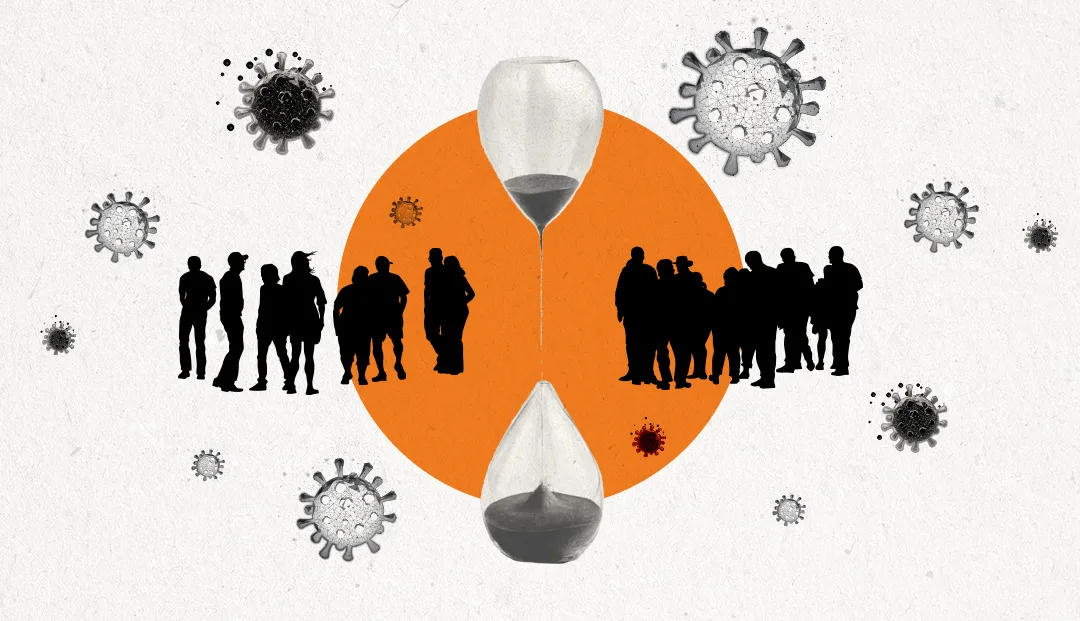
As COVID-19 remains a threat to public health, faculty members from the School of Public and International Affairs have continued research efforts to determine how the virus has left a lasting impact on individuals and populations worldwide.
Noreen Goldman, the Hughes-Rogers Professor of Demography and Public Affairs, examined the impact of COVID-19 on life expectancy among four Asian American subgroups — Asian Indians, Chinese, Filipinos, and Vietnamese — from 2019-2021. The research findings were published in SSM – Population Health. Goldman worked alongside Sung Park, of the University of Massachusetts, Boston; Hiram Beltrán-Sánchez, of the University of California, Los Angeles; and Theresa Andrasfay, of California State University, San Marcos.
They found that these groups experienced an increase in mortality during the two years of the pandemic — anywhere from 1.1 to 3.9 years — compared to individuals who identify as white. Filipino men experienced the greatest loss of life, ranging between 3.5 and 3.9 years. In 2021, life expectancy numbers began to level off or increase slightly for some Asian groups.
“Many Filipinos work in healthcare, but it wouldn’t explain why the impact was so much greater among Filipino men than Filipino women,” Goldman said. “Higher rates of obesity among Filipino men than Filipino women may be one partial explanation. Vietnamese Americans, as well as Filipinos, are more likely than other racial/ethnic groups to live in multigenerational households, which would suggest continued higher levels of viral exposure.”
Vietnamese men and women saw life expectancy losses continue steadily into the second year of the pandemic.
“Vietnamese Americans are also more likely than other major subgroups to be working frontline jobs, many of which are low-status jobs with high exposure, and they have lower income and educational attainment than other major Asian American subgroups,” Goldman said. “Their lower levels of English proficiency may have hampered access to timely and accurate information about viral transmission as well as access to medical treatment.”
Goldman is currently working on research to examine the pandemic’s effect on Native American life loss.
But while those who contract COVID typically rebound, one in five who become infected continue to experience symptoms, according to research out of the Centers for Disease Control and Prevention. Known as “Long COVID,” the condition comprises “symptoms lasting three or more months after first contracting the virus, and that they didn’t have prior to their COVID-19 infection,” according to the CDC.
Heather Howard, a professor of the practice at SPIA and co-director of the Center for Health and Wellbeing’s Global Health Program, and Brontë Nevins, a master’s student in public affairs, shared policy proposals drawn from past disaster responses that could be used for those still experiencing COVID-related symptoms in a piece for Public Health Post.
“Long COVID is already contributing to labor shortages and causing debilitating health impacts,” Howard said. “As our research shows, the current disability and healthcare systems are not up to the task of caring for people with Long COVID. Fortunately, the National Institutes of Health has begun research on treatments for Long COVID, but that research will take time, and the needs of long haulers are pressing.”
The research was born out of Bronte’s final paper in Howard’s class, where she investigated the growing challenges associated with Long COVID and proposed ways that the state of Maryland could support COVID long haulers. The pair then worked together to further the work for state and federal responses.
In “Learning from Past Disasters to Help COVID Long Haulers,” Howard and Nevins highlight how “robust policy responses” from prior emergencies and disasters offer promise for those dealing with debilitating health complications. They specifically mention the Black Lung Benefits Act, established in 1972 to provide monthly payments and medical benefits to miners disabled from pneumoconiosis, and the September 11th Victims Compensation Fund as useful models that could be replicated for individuals suffering from Long COVID.
“Akin to Black Lung, Long COVID is a currently incurable disease with potentially catastrophic medical costs,” Howard said. “Long COVID patients are also facing difficulties in accessing Social Security disability support, and Long COVID is also partially occupation-driven. The Black Lung Act serves as a good model for federal intervention when there are very high rates of disability stemming from an airborne illness. Similarly, the September 11th Victim Compensation Fund could be a good model for a retroactive compensation policy.”
They also argue that following previous public health crises, such as Hurricane Katrina and Flint, Michigan’s water contamination, states have used Medicaid waivers for people exposed to environmental hazards. The waivers would allow individuals without health insurance to still receive necessary treatment.
“After previous disasters, states have requested Medicaid waivers to expedite or simplify Medicaid enrollment or provide services that are not usually covered. States could apply for demonstration waivers to provide temporary health insurance coverage for Long COVID patients who lose their employer-sponsored health insurance due to disability,” Nevins said.

